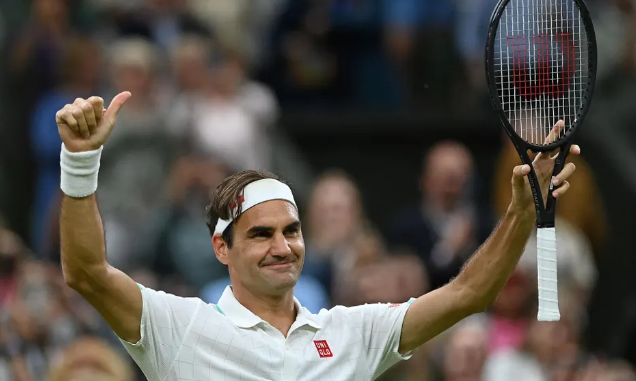
Roger Federer Is Retiring As Tennis’ Career Earnings Leader. Here’s How Much Money He’s Made.
Brett Knight
Forbes Staff
Roger Federer celebrated after beating Lorenzo Sonego at Wimbledon last year.
Roger Federer last played at a competitive tournament at Wimbledon in July 2021.GLYN KIRK/AFP via Getty Images
A month after Serena Williams announced she would retire, another tennis legend is ready to hang up his racket. Roger Federer said Thursday that next week’s Laver Cup—a team tournament he cofounded in 2017—would be his final professional event.
Federer, 41, will leave behind an incredible legacy on the court, but however he stands in the eternal comparison with his longtime rivals Rafael Nadal and Novak Djokovic, he is without a doubt tennis’ all-time financial champion.
The Swiss ace has collected $131 million in prize money since turning pro in 1998, third in ATP Tour history behind Djokovic’s $159 million and Nadal’s $132 million. Off the court, however, it’s no contest. Federer has made roughly $1 billion (before taxes and agents’ fees) across his career just from his endorsements and other business endeavors, according to Forbes estimates. He remains sports’ top pitchman, with $90 million in annual off-court earnings, $10 million ahead of No. 2 LeBron James.
That success landed Federer at No. 7 on Forbes’ 2022 list of the world’s highest-paid athletes even though he won only about $700,000 in prize money during that time. He was the world’s highest-paid athlete on the 2020 list with a total of $106.3 million and has ranked as the highest-paid tennis player for 16 straight years.
Federer’s career earnings total of $1.1 billion before taxes and agents’ fees is more than twice Nadal’s $500 million and Djokovic’s $470 million, according to Forbes estimates. It also makes him one of just seven athletes across sports—alongside LeBron James, Floyd Mayweather, Lionel Messi, Phil Mickelson, Cristiano Ronaldo and Tiger Woods—to have surpassed $1 billion while still active.
Federer has long-term endorsement deals with over a dozen brands, and many of them have stuck with him for more than a decade, including Credit Suisse, Lindt, Mercedes and Rolex. In 2018, he left Nike, which had paid him roughly $150 million over the course of two decades, to sign an apparel deal with Uniqlo reportedly worth up to $300 million over ten years. When he was healthy, Federer could also command $2 million per event to play in exhibitions and smaller tournaments.
“The past three years have presented me with challenges in the form of injuries and surgeries,” Federer, who hasn’t played a competitive match since reaching the Wimbledon quarterfinals in July 2021, said Thursday in his retirement announcement, posted to his social media accounts. “I’ve worked hard to return to full competitive form. But I also know my body’s capacities and limits, and its message to me lately has been clear.”
Federer said he would “play more tennis in the future, of course, but just not in Grand Slams or on the tour.” But even if he steps away from the sport entirely, he should be able to count on several of his sponsorships continuing into retirement. Maria Sharapova, for instance, has continued to promote Nike, Evian and Porsche since leaving the game in 2020.
To be sure, Federer has eclipsed Sharapova and just about every other tennis pro with his on-the-court accomplishments: 20 Grand Slam singles titles, including a record 8 at Wimbledon; 310 weeks as the ATP Tour’s top-ranked player, including a record 237 in a row; and 103 ATP singles titles, the second-most after Jimmy Connors’ 109.
Could Federer one day become the fourth athlete billionaire, after Michael Jordan, James and Woods? Don’t count him out. In addition to his endorsement money, he has an undisclosed but significant stake in the Swiss shoe brand On, having invested in the company in 2019 and watched it go public last September. Its market cap now si
ts at nearly $6 billion.
Leave a Reply